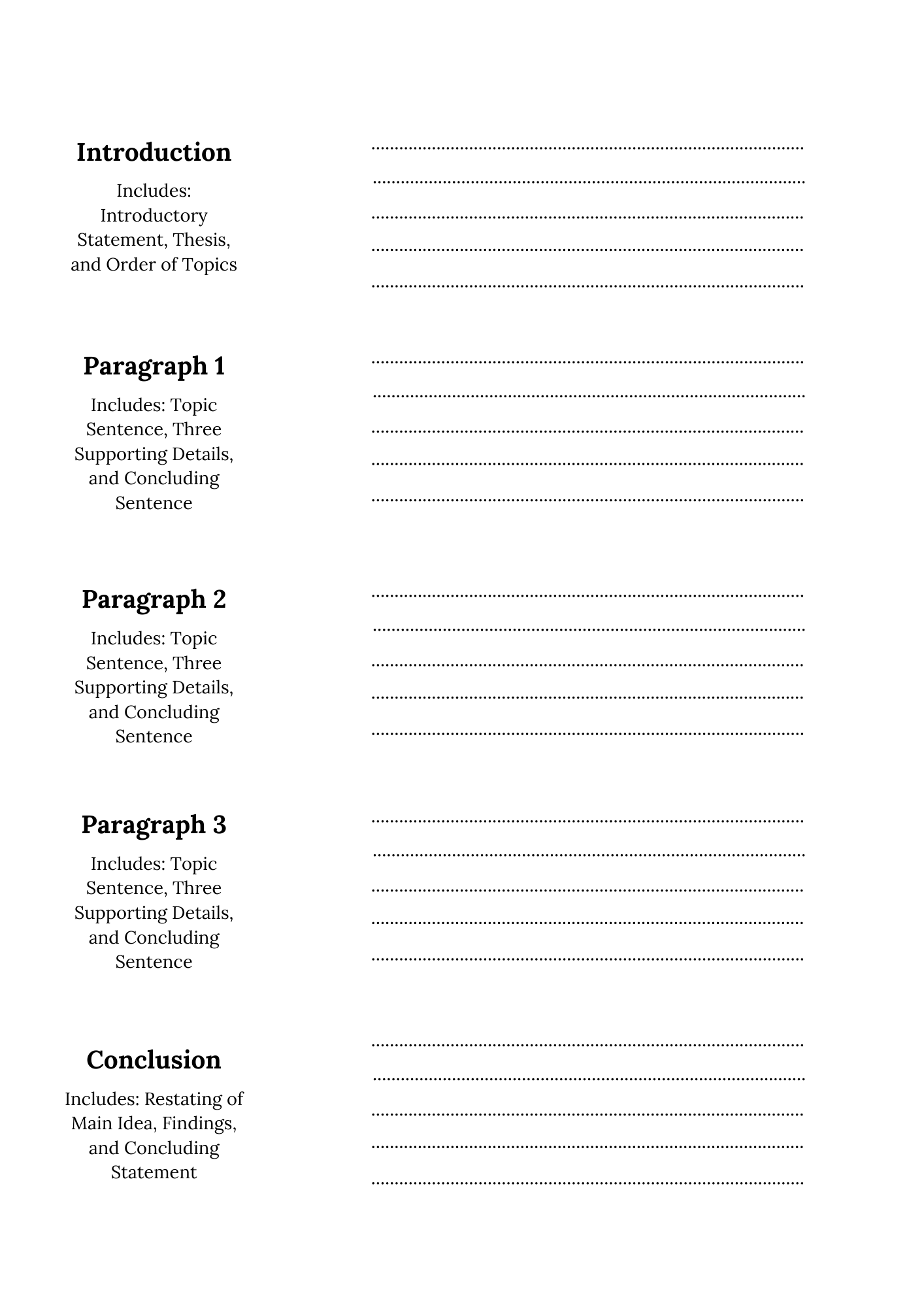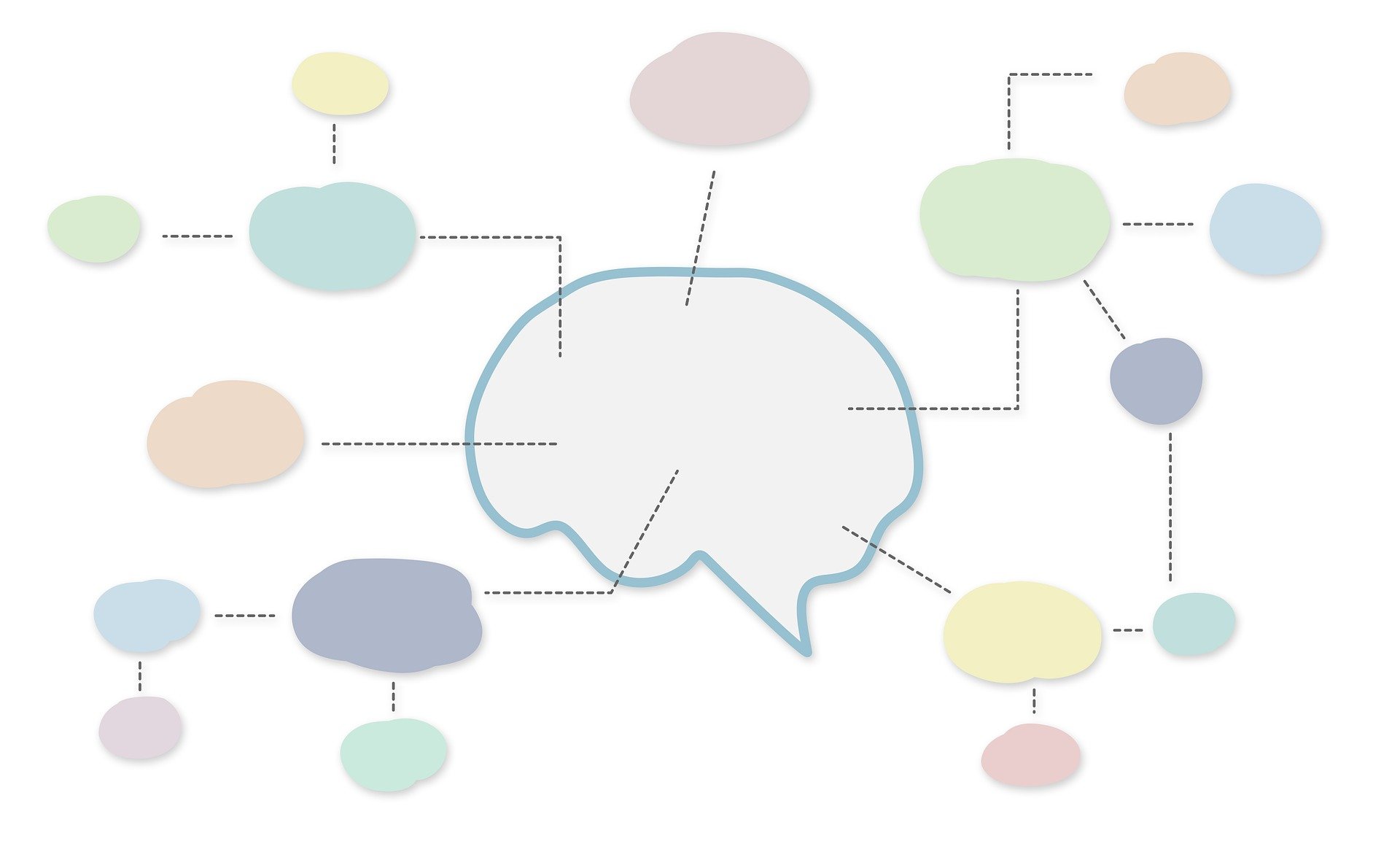
StudySmarter: Study help & AI tools
4.5 • +22k Ratings
More than 22 Million Downloads
Free
A good essay doesn't appear out of thin air — it develops from a plan. Essay planning is essential to ensure your essay is organized and coherent. Using a plan to begin your essay writing process will help you figure out your main idea, topic sentences, and details. Luckily, tried and tested essay planning sheets and templates can assist you with outlining your essay and improving your writing skills.



Lerne mit deinen Freunden und bleibe auf dem richtigen Kurs mit deinen persönlichen Lernstatistiken
Jetzt kostenlos anmeldenA good essay doesn't appear out of thin air — it develops from a plan. Essay planning is essential to ensure your essay is organized and coherent. Using a plan to begin your essay writing process will help you figure out your main idea, topic sentences, and details. Luckily, tried and tested essay planning sheets and templates can assist you with outlining your essay and improving your writing skills.
You need to take a few steps to begin planning your essay.
If your teacher didn't provide an essay topic, consider some questions, events, or ideas that you feel are important and would like to expand on. If they did provide an essay topic, identify keywords and phrases to focus on. You should strive to use these keywords throughout your essay and as a basis for your research plan.
Your teacher may have already provided you with some reference material or links to reputable sources. If so, plan on using this material to kickstart your research on the topic. Supplement this with your own findings as needed. If you're starting from scratch, use reputable sources to research your topic, and keep a list of references as you do this if you are required to cite your information. Some credible sources include dictionaries, encyclopedias, textbooks, and many websites with .edu or .org domains.
You can use a mind map, essay plan sheet, or other essay planning tools to organize your research and main ideas. See the essay plan sheet in the "Structuring your Essay" section for an example. Organizing your research and ideas will help you plan out your main topic sentences for each paragraph and the order of these paragraphs. You'll also use this step to structure your research into supporting sentences for each main topic. Write a concluding sentence at the end of each paragraph to summarize how they contribute to the main topic.
Once you've organized your ideas using an essay planning tool of your choice, you're ready to write your first draft. Use your essay plan sheet to form your introduction, the topic sentence for each paragraph, supporting details, concluding sentences, and your overall conclusion. Remember, your first draft doesn't have to be perfect.
Once you complete your first draft, it's time to re-read, edit, and revise your essay. Use this time to cut out unnecessary details and restructure your essay. Here are some helpful tips to improve your editing skills:
Because structuring your essay can seem daunting, the best way to help you is to use an essay planning sheet.
An essay planning sheet (sometimes called a template) is a document that gives you some suggested categories to organize your essay topic and main points. These plans will help to improve your essay formatting skills. Planning sheets have different formats and offer different suggestions, but most include the following:
You can find free essay plan sheets online or create your own. You can also use a mind map or box plan to organize your writing. Here is an example of an essay planning sheet for a general five-paragraph essay:
 Fig. 1 - Essay planning sheet.
Fig. 1 - Essay planning sheet.
In the introduction, you'll want to ensure you present your argument, idea, or thesis in this section. Do your best to start with an attention-grabbing hook or introductory statement that will keep your reader interested in your essay. Thought-provoking questions, interesting quotes, or controversial statements can be good tools to use in your introduction. After you have drawn your reader in, it is important to state your thesis statement (a sentence or two summarizing the main argument of your essay). Your order of topics comes last and gives your reader an overview of the main supporting points you will make in your essay. This will help your reader to follow your argument from the get-go. Improving the quality of your introduction is a skill that comes with time and is a crucial part of the writing process.
Each paragraph should start with a topic sentence that presents a main idea or argument that supports your main point. You should include at least three supporting details in each paragraph. These details should provide quotes from reputable sources, data, verifiable facts, or other information that gives weight to your topic sentence. Finish with a concluding sentence to summarize the overall argument in each paragraph.
Writing an effective conclusion is an important skill to help your reader remember the main idea or argument of your writing. You should restate your thesis, main points, and key findings from your supporting paragraphs. Finish off your essay with your concluding statement. Similar to the concluding sentences you have created in your previous paragraphs, the concluding statement wraps up your essay and signals to the reader that you have completed your argument. Don't include any new information in your conclusion. This paragraph is intended to summarize and restate what your reader has already learned in your essay.
Remember, readers often remember the first and last few sentences of an essay more easily than the overall text. Use quotes, questions, or statements that will grab the attention of your readers and leave a lasting impression on them.
Let's create an example essay plan using the planning sheet we previously discussed. First, if you don't already have an essay topic or thesis, take the time to choose one. For this example, we'll use the topic "intercultural awareness."
Your first step in the writing process would be to research intercultural awareness. There are many aspects to this topic, so it might be helpful to think of a question regarding intercultural awareness that you'd like to answer. A mind map can help organize your thoughts and discover what you already know about this topic. After completing your research and mind map, use this information to figure out your main topic sentences. Take the time to arrange these main topics in a logical order and ensure these topics relate to your thesis.
 Fig. 2 - Mind map illustration
Fig. 2 - Mind map illustration
Now that we have our main topic sentences, we can use our research to add supporting details and form our paragraphs. Be sure to add references to the end of your essay if these details include quotes, data, paraphrased text, or facts. Once you've completed the body of your essay, you can flesh out your introduction and conclusion. Be sure to use attention-grabbing sentences and paraphrase your main idea and topic sentences in these introductory and concluding paragraphs.
Here is an example of a completed essay planning sheet:
Essay Topic: Why is intercultural awareness important for business?
| Section | Content |
Introduction, including:
|
|
Paragraph 1, including:
|
|
Paragraph 2, including:
|
|
Paragraph 3, including:
|
|
Conclusion, including:
|
|
Don't forget to add your references to your essay and cite them in the required format.
Once you've filled out your essay planning sheet, it's time to write your first draft! Using an essay planning sheet or template and looking at other essay examples can help you to organize your writing logically and coherently. These tools will help ensure you've included all the necessary parts for a successful essay in your writing process.
Decide on your thesis if your teacher hasn't provided one.
Use credible sources to research your thesis.
Use a mind map, essay planning sheet, or other essay planning tools to organize your ideas.
Write out your first draft.
Re-read, edit, and revise your essay.
1 Stephen Covey, The 7 Habits of Highly Effective People (1989).
Use a mind map, essay planning sheet, or other essay planning tools to organize your ideas.
Make sure your essay plan structure includes space to note down your:
Look for an essay planning sheet or template designed specifically for a narrative essay. This type of planning sheet can help you make sure you've included the necessary details and used the right structure in your essay.
First, decide on your thesis or main topic if you haven't been provided one. Next, use that as the basis for your research. Use an essay outline tool or make your own to organize your thoughts into the key parts of your essay.
Look for an essay plan sheet designed specifically for an expository essay. This type of planning sheet can help you make sure you've included the necessary details and used the right structure in your essay.
What areas should you check while proofreading your essay?
Grammar, spelling, and typography.
What grammar points should you look for while proofreading?
Make sure your verb tense is correct, subject and verbs are in agreement and you've used the correct pronouns.
What tips can improve your proofreading?
Print your essay, read it out loud slowly and have a friend check it for errors.
What common spelling errors should you look for?
Check if you've properly used its vs. it's or you're vs. your. Also be careful about using their, there or they're.
How can you check your spelling?
Use online proofreading services or editing tools to check your spelling. Read your writing out loud. Have a friend read your essay and look for errors.
How can you make sure your verb tense is correct?
Print out a copy of your essay. Circle the verbs in each sentence. Make sure they are all in the same tense.

Already have an account? Log in
Open in AppThe first learning app that truly has everything you need to ace your exams in one place


Sign up to highlight and take notes. It’s 100% free.
Save explanations to your personalised space and access them anytime, anywhere!
Sign up with Email Sign up with AppleBy signing up, you agree to the Terms and Conditions and the Privacy Policy of StudySmarter.
Already have an account? Log in